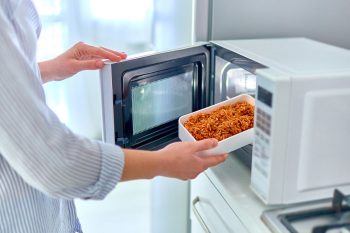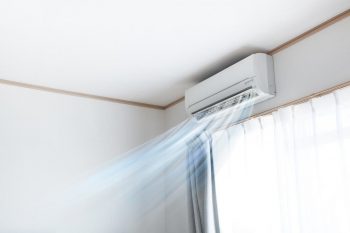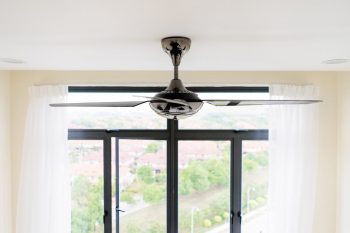
Dehumidifiers are essential home appliances that maintain the optimal humidity level, ensuring a comfortable and healthy living environment. But have you ever wondered how these devices collect water from the air? In this comprehensive guide, we will delve into the science and mechanics behind how a dehumidifier collects water, comparing different types of dehumidifiers, and providing tips to enhance their water collection efficiency.
A dehumidifier collects water by drawing in moist air from the surrounding area with a fan. This air is then passed over cooling coils or a desiccant material, causing the moisture in the air to condense into water droplets. These droplets are collected in a tank or bucket within the dehumidifier. The drier air is then expelled back into the room, resulting in a lower humidity level.
The Basic Function of a Dehumidifier
The primary function of a dehumidifier is to remove excess moisture from the air, thus improving the comfort and health of your home. By preventing mold, mildew, musty smells, and condensation in damp areas of your home, dehumidifiers can reduce allergies, deter pests, and even lower energy bills when used in combination with an air conditioner. The ideal relative humidity level for a home is between 30% and 50%.
How Does a Dehumidifier Work?
A dehumidifier operates by drawing in moist air from the surrounding area using a fan. This air is then passed through a heat exchanger or cooling coils, causing the moisture in the air to condense into water droplets. These water droplets are then collected in a container, often referred to as a tank or bucket. The now drier air is then expelled back into the room, resulting in a lower humidity level.
There are two main types of dehumidifiers: refrigeration and desiccant. Refrigeration dehumidifiers use cooling coils to condense the moisture from the air, while desiccant dehumidifiers pass the air over a wheel coated with a water-absorbing material called desiccant.
The Science Behind Dehumidification
Dehumidifiers rely on the principles of thermodynamics and psychrometry. As moist air passes over the cooling coils, its temperature drops, causing the moisture in the air to condense into water droplets. The cooling coils are designed to be colder than the dew point, a temperature at which air becomes saturated and water vapor starts to condense.
Key Components of a Dehumidifier
The key components that play a crucial role in a dehumidifier’s water collection process are the fan, evaporator coil, refrigeration system, and water reservoir. The fan pulls in the moist air, which passes over the evaporator coil, leading to condensation of the moisture. This condensed water is collected in the reservoir for disposal or further processing.
Storing and Disposing of Collected Water
The water collected by a dehumidifier is stored in a water tank or condensate collection bucket located in the bottom half of the dehumidifier’s plastic housing. Once the tank is full, an indicator activates, notifying the user to empty the reservoir. The water can be disposed of down the drain or used for other purposes like watering plants.
Different Types of Dehumidifiers
Refrigerant, desiccant, and whole house dehumidifiers are the three main types of dehumidifiers. Refrigerant dehumidifiers work by creating a cold surface for condensation, while desiccant dehumidifiers use a desiccant material to absorb moisture. Whole house dehumidifiers are integrated into a home’s forced-air system and can use either of these technologies.
Factors Affecting Dehumidifier Efficiency
Several factors can impact a dehumidifier’s efficiency or capacity to collect water. These include relative humidity, dehumidifier capacity, room temperature, operating conditions, dehumidifier type, and maintenance practices.
Enhancing Dehumidifier’s Water Collection Capacity
To enhance a dehumidifier’s water collection capacity, follow maintenance practices like reviewing the owner’s manual, properly placing the dehumidifier, cleaning the condensate bucket frequently, checking and cleaning the fan blades, inspecting and cleaning the dehumidifier’s coils, replacing or cleaning the air filter, ensuring proper humidity settings, and emptying the tank regularly.
By understanding how a dehumidifier collects water, you can ensure optimal performance and longevity of your device, contributing to a healthier and more comfortable home environment.
Frequently Asked Questions
How often should I empty the water tank in my dehumidifier?
The frequency of emptying the water tank depends on the humidity level of your home and the capacity of the tank. In highly humid environments, you may need to empty the tank once or twice a day. However, most dehumidifiers come with an indicator that notifies you when the tank is full.
Can I use the water collected by a dehumidifier for drinking?
No, the water collected by a dehumidifier isn’t safe to drink. It may contain contaminants and bacteria from the air, making it unsuitable for drinking. However, it can be used for other purposes such as watering plants.
Does a dehumidifier consume a lot of electricity?
The electricity consumption of a dehumidifier depends on its size, model, and how often it’s running. However, by maintaining optimal humidity levels, a dehumidifier can actually help lower energy bills as it makes air conditioning more efficient.
Where should I place my dehumidifier for maximum efficiency?
For maximum efficiency, place your dehumidifier in areas with the highest humidity levels, such as basements, bathrooms, or laundry rooms. Make sure it’s at least 6-12 inches away from walls and furniture for proper airflow.
Can I use a dehumidifier in any size room?
Yes, but the effectiveness will depend on the capacity of the dehumidifier. Larger rooms or areas with high humidity may require a dehumidifier with a higher capacity. Always check the manufacturer’s recommendations for the suitable room size for your specific dehumidifier model.












